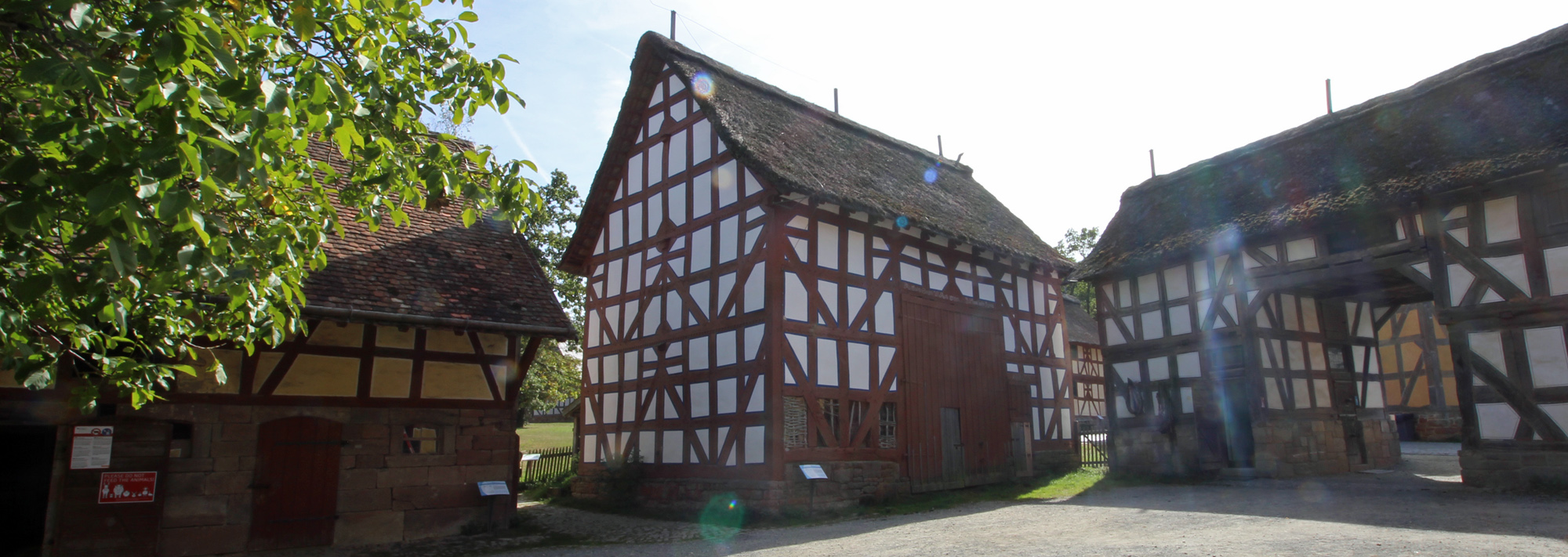Stable Barn from Wollmar

Built: 1691
Dismantled: 1977
Reassembled: 1978 to 1980
The farmstead is currently undergoing extensive renovations and is therefore not accessible. The cover for the dung heap is being renovated to meet current environmental standards. Where the timber framing is too dilapidated to preserve the buildings’ existing structure, it is being repaired, supplemented or replaced. The same is true for damaged roofs, infills, windows, doors and flooring. The buildings should look like they are from around 1910 and will be restored accordingly. The pigsty and chicken coop, however, will be optimised to ensure modern animal welfare standards. Once the renovations are complete the manure, pigs and chickens will all return.
This two-storey timber-framed barn building with an incorporated stable rests on a plinth of trimmed sandstone. The timber framing features carved half-rosettes above the barn door and on the middle posts of the eaves side facing the yard, and crenelated decoration on the wall plate, which is the vertical boundary at the top of the timber-framed wall. The building has natural roofing and the gable is daubed. It is divided into two areas of use, a stable part and a barn part. On the barn door lintel, there is an inscription: An Gotteß Segen Ist Alleß Gelegen (The Grace of God Determines All) JoHannes becker Anna. The inscription above the stable portion reads: ANNO 1691 and MAI 15.1..
In 1977, the building had to make way to the widening of the main street in Wollmar, its original location. The timber framework was restored in the museum in 2012/2013 and returned to its appearance of about 1880. This was based on a historic photograph taken by Ludwig Bickell (1838 to 1901), a Marburg lawyer, photographer, and preservation officer. In the barn section, hay and straw were stored in the bays and in the middle attic. The barn door was just tall enough so that a fully loaded harvest cart could pass through and the straw and hay could be thrown onto the upper floor using pitchforks. Before steam-powered threshing machines came into use after 1850, grain was threshed with flails over several winter weeks on the central threshing floor.
After mechanised threshing was introduced, the time this task took was reduced to only one to three days and nights. In the museum, no cattle are kept in the stable part to the left, since keeping animals permanently tethered without daylight runs counter to current legal animal welfare standards.

Mit dem Laden der Karte akzeptieren Sie die Datenschutzerklärung von Google.
Mehr erfahren




